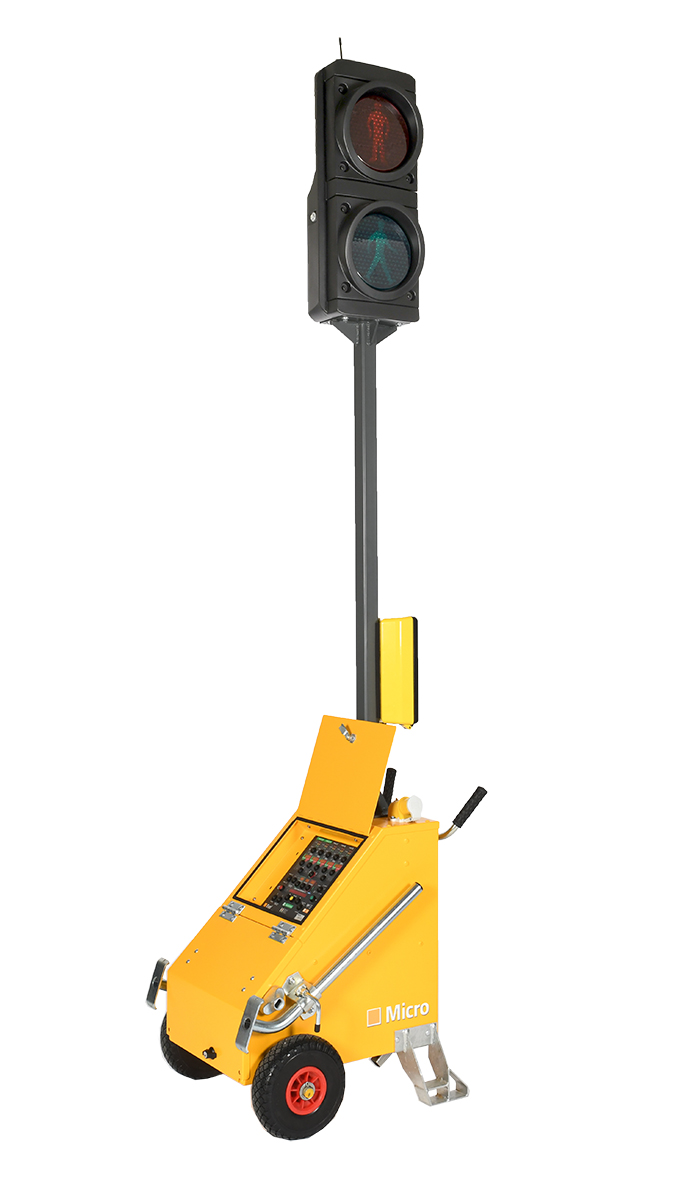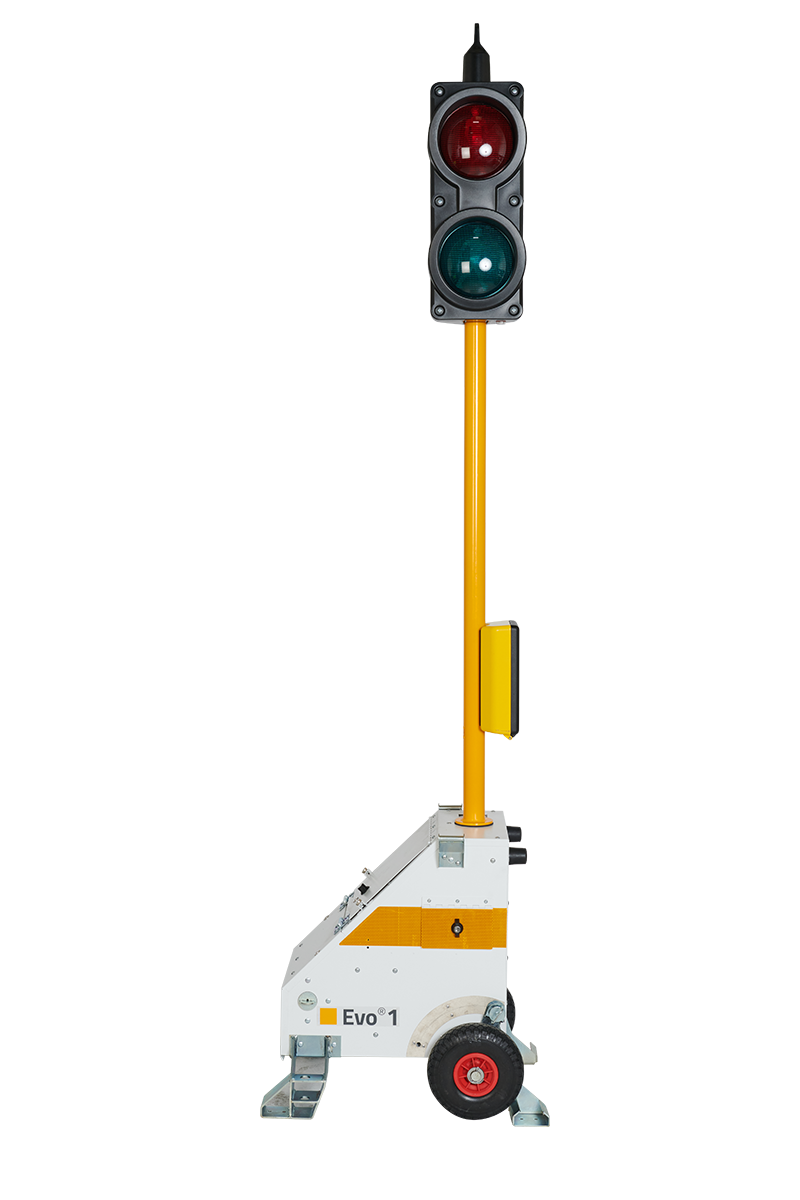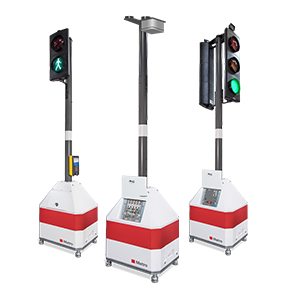Standalone pedestrian crossings are pedestrian facilities across a carriageway. Their sole purpose is moving pedestrians safely across the road.
Standalone Pedestrian Crossings
A defined in TAL 3/11, it is mandatory that two traffic signals are used on each approach to standalone pedestrian crossings.
It is strongly recommended that two vehicle signal heads should be provided on each approach wherever pedestrian facilities are used.
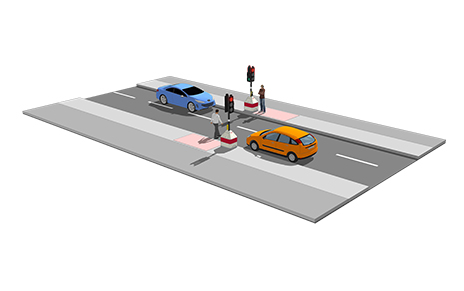
Challenges
Standalone pedestrian crossings are straightforward from a signalling perspective, however there are important safety considerations to be made before deploying temporary pedestrian crossings.
-
1. Signal Visibility
From a safety perspective, the signals must have good visibility.
Two traffic signals must be on each approach to a standalone pedestrian crossing, so that it is visible on approach and while waiting at the ‘WAIT HERE’ sign.
It is recommended that this practice be followed on all sites that incorporate a temporary pedestrian crossing.
-
2. Road Speed
The temporary traffic signals used must be suited to the speed of road onto which they are deployed.
For example, it is strongly recommended in the guidance that portable pedestrian facilities should not be used on high-speed roads*.
Therefore, standalone pedestrian crossings on roads with speed limits above 30mph need very careful consideration.
*For the purposes of traffic signals a ‘high-speed road’ is one on which the 85th percentile approach speed is 35mph or above.
-
3. Setting the correct timings
Timings for the crossing need to be correct for the width of the crossing.
Furthermore, timings need to be entered for Invitation (Green Man), Blackout (Lights out) and Clearance, which differ between TfL and national guidance, adding to confusion.
Incorrect timing setting can result in insufficient crossing time for pedestrians or overextended crossing times, which causes traffic build-up.
Current NHSS training may not cover all aspects of setting timings for temporary pedestrian facilities at roadworks.
-
4. Cost
Finally, the cost-effectiveness of the crossing needs to be considered. How much maintenance does it require? How frequent are battery swaps required? How reliable is the solution?
Speak to an expert
Contact us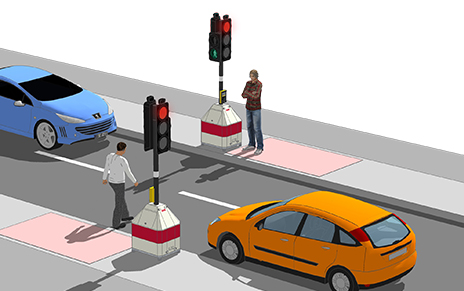
Metro Standalone Crossing
A unique benefit of the Metro product is the ability to have more than one signal head fitted to each base. This means that Metro can deliver standalone pedestrian crossings using just two bases.
Furthermore, Metro’s configurable AGD 308 radar can be programmed to detect fast moving vehicles and accommodate extended braking distances, improving the safety of pedestrian crossings.

